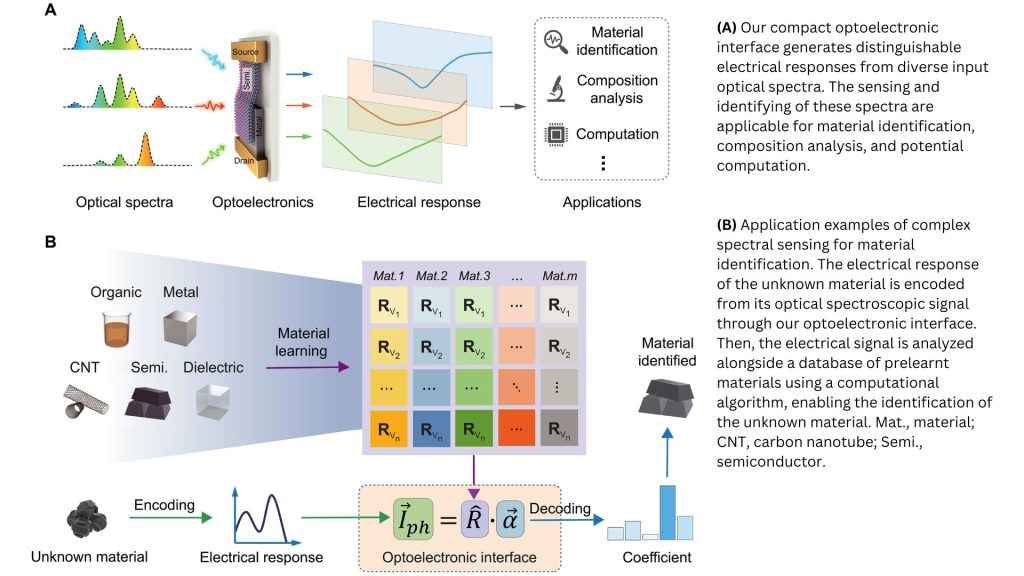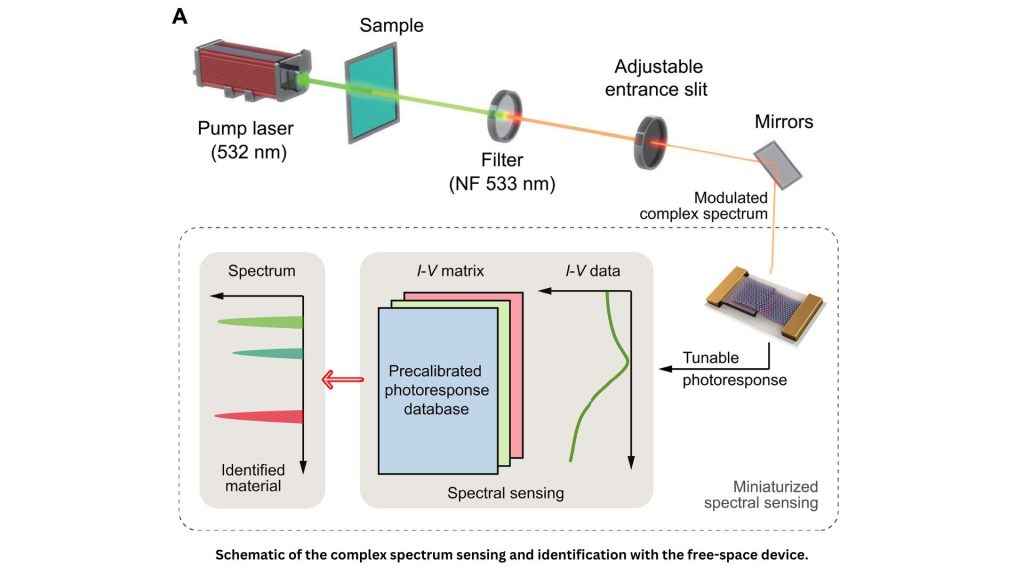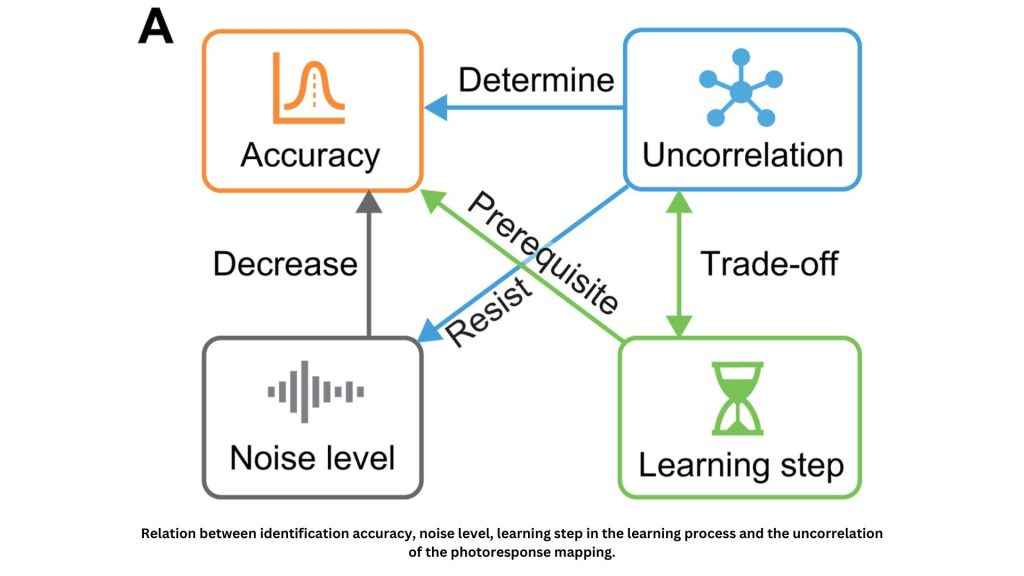Researchers develop a tiny sensor that could change spectral sensing for everyday devices

If you’ve ever explored the world of spectral sensing, you’ll know that understanding how materials interact with light has been at the core of many scientific advancements. Traditional spectrometers, though highly accurate, are often bulky, complex, and expensive. However, a team of researchers led by the researchers at Aalto University has made significant strides in overcoming these challenges by developing a revolutionary miniaturized spectral sensor. This new device integrates a tunable optical filter with a photodetector, offering high-precision spectral analysis in a compact, efficient form.
 Survey
SurveyWith this breakthrough, we may soon see a future where spectral sensing technology becomes as ubiquitous and accessible as the devices in our pockets. Published in Science Advances’ research paper – Miniaturized spectral sensing with a tunable optoelectronic interface, this technology promises to open up new possibilities in fields like healthcare, environmental monitoring, and food safety. Keep reading to discover how this innovative spectral sensor could transform various industries and the road ahead for its wide adoption.
The basics of spectral sensing
Spectral sensing works by analyzing how different materials interact with light. Every substance has a unique spectral signature—a distinct pattern of light absorption and reflection. Conventional spectrometers do this job well but are usually large, complex, and expensive. That’s why researchers have been racing to create miniaturized alternatives that can match their performance without the bulk.
The new spectral sensor developed by the researchers at Aalto University does exactly that. By integrating a tunable optical filter directly with a photodetector, the device is able to selectively capture different wavelengths of light with high precision—all in a compact form factor.

Image via Aalto University/Research Article
How it works?
At the heart of this sensor is its tunable optoelectronic interface. The system consists of a semiconductor-based photodetector combined with an adjustable optical filter. The magic happens when an external voltage is applied, dynamically changing the filter’s transmission properties to control which wavelengths of light reach the detector.
This approach allows the device to scan through multiple wavelengths by simply adjusting the voltage, eliminating the need for moving parts. Traditional spectrometers rely on mechanical components like diffraction gratings or prism-based filters, which take up space and introduce durability issues. The voltage-controlled tuning in this sensor makes it not just smaller, but also faster and more reliable in the long run.
Also Read: Why your wireless earbuds die faster over time and what science says about fixing it?
Performance metrics
Despite its tiny size, this spectral sensor delivers impressive performance. It achieves spectral resolution comparable to traditional benchtop spectrometers, meaning it can accurately differentiate between various materials and substances. The tunable range of the optical filter covers a large portion of the visible spectrum, making it versatile enough for numerous applications.
One of the standout features is its rapid response time. Thanks to the fast-tuning capability of the optoelectronic interface, the sensor can capture spectral data in real-time. This makes it a great fit for applications like environmental monitoring and medical diagnostics, where quick and accurate measurements are essential.

Also Read: AI adoption fail: 80 per cent of companies neglect human factors critical for AI success
Where this tech could go next?
Because of its compact and efficient design, this spectral sensor has a wide range of potential uses:
- Healthcare: Imagine a portable diagnostic tool that could scan your skin or fluids for early signs of illness. This sensor could be embedded into small medical devices, offering real-time health insights without requiring expensive lab tests.
- Environmental Monitoring: Air and water quality monitoring could become more accessible. A handheld device powered by this sensor could instantly detect pollutants, giving users real-time data about their surroundings.
- Food Safety: The sensor could be used to check the freshness of produce or detect contaminants in food. A quick scan at the grocery store could tell you whether that fruit is still good to eat.
- Consumer Electronics: Integrating this technology into smartphones and wearables could open up new possibilities, from augmented reality applications to real-time material identification for everyday use.

Image via Aalto University/Research Article
Challenges on the road ahead
While the potential is huge, there are still a few hurdles to overcome before this sensor becomes mainstream:
- Calibration & Standardization: For this technology to be widely adopted, it needs to perform consistently across different conditions. Creating robust calibration protocols will be key to ensuring accuracy.
- Scaling Up Production: Right now, this is cutting-edge research. To make it commercially viable, manufacturers will need to develop scalable production methods that ensure uniform quality across thousands (or even millions) of units.
- Power Efficiency: If this sensor is going to be used in portable and wearable devices, it needs to be optimized for low power consumption. Future iterations might explore energy-efficient modes or alternative power sources.
Also Read: Humanity’s Last Exam Explained – The ultimate AI benchmark that sets the tone of our AI future
The miniaturized spectral sensor with a tunable optoelectronic interface developed by the researchers at Aalto University represents a significant step forward in the field of spectral sensing. Its combination of compactness, high spectral resolution, and rapid response positions it as a versatile tool for a wide range of applications. As research progresses, addressing the remaining challenges will be crucial for realizing the full potential of this technology in practical, real-world scenarios.
The integration of such advanced spectral sensing capabilities into everyday devices holds the promise of transforming how we interact with the world, providing accessible and actionable information across various domains. The work by the researchers at Aalto University lays a solid foundation for future innovations in this exciting and impactful field.
Satvik Pandey
Satvik Pandey, is a self-professed Steve Jobs (not Apple) fanboy, a science & tech writer, and a sports addict. At Digit, he works as a Deputy Features Editor, and manages the daily functioning of the magazine. He also reviews audio-products (speakers, headphones, soundbars, etc.), smartwatches, projectors, and everything else that he can get his hands on. A media and communications graduate, Satvik is also an avid shutterbug, and when he's not working or gaming, he can be found fiddling with any camera he can get his hands on and helping produce videos – which means he spends an awful amount of time in our studio. His game of choice is Counter-Strike, and he's still attempting to turn pro. He can talk your ear off about the game, and we'd strongly advise you to steer clear of the topic unless you too are a CS junkie. View Full Profile